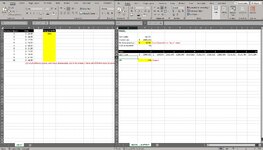MCbaffinbay
New Member
- Joined
- Aug 29, 2023
- Messages
- 3
- Office Version
- 365
- Platform
- Windows
Hi. I am seeing if anyone knows how to create a VBA macro to run a data model I have built using unique rows of variables (input) and recording the output, for 100 different scenarios. I have about 5 unique variables that result in an IRR calculation in my model. Can I automate this so I don’t need to run the model manually 100 different times?






